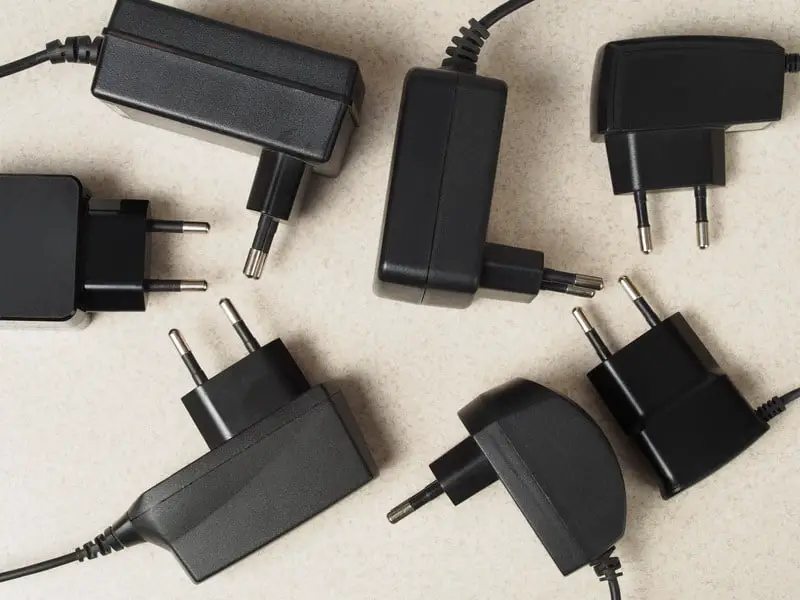You may have heard or read the warnings about ebike batteries. “Don’t charge your battery if it’s frozen!” “Don’t heat up a cold battery using a heater” “Keep it out of direct sunlight”. There is some truth to those warnings and more.
We’ll delve into the ins and outs of electric bike batteries and how hot and cold temperatures can affect performance and battery life. And what temperature warnings you should truly take note of when charging your battery and using your electric bike.
You can think of electric bike batteries as a “Goldilocks” type of device. It doesn’t like to get too hot, neither does it like to get too cold, it prefers temperature ranges that are “just right”.
That includes temperatures ranges for charging between 41°F to 113°F (5°C to 45°C), typical use while riding ideally around 68°F (20°C), and storage between 41°F (5°C) and 68°F (20°C).
Go outside these temperature ranges in extreme cases and the battery chemistry starts to be affected in different ways, from a reduced capacity to an increased risk of permanent internal damage or fire.
What is in an Ebike Battery?
Throughout this article, I’ll generally be referencing Lithium-Ion (Li-ion) battery chemistry. Almost all modern electric bikes use this current standard battery type for its high energy density.
There are a few different chemistries of the Lithium-ion battery used in modern ebikes, which include: Lithium Nickel Cobalt Manganese (Li-NCM), Lithium Manganese Cobalt (LiMnCO2), Lithium Nickel Cobalt Aluminium (LiNiCoAlO2), and Lithium Polymer (usually Cobalt chemistry).
The Cells
Within each electric bike battery, there are a number of smaller individual battery cells – usually in the 18650 format. This cell is slightly bigger than an ‘AA’ battery and carries a 1.5v charge, with a capacity range of 3200-3500 mAh capacity.

These smaller cells get tied together in series and parallel and combine to form the larger electric bike battery. Depending on the voltage (36V, 48V, 72V typical) and capacity (400 Wh to 1000+ Wh) the arrangement and number of these cells vary. One example is the Bosch power packs contain 40-50 individual cells in them .
The BMS
The BM…what? BMS stands for Battery Management System and it is a part of all lithium-ion batteries to one degree or another. The BMS does several things for the battery including:
- Monitoring the battery for hazardous conditions like high/low temperature, charge imbalance between cells, etc.
- If an unsafe condition arises the BMS can cut power from charging or delivering a charge to avoid battery failure
- Monitors the state of charge, and state of health (capacity) of the battery
All about ideal charging conditions
Ideal charging conditions involve cool temperatures and slow charging. Manufacturers typically recommend charging an electric bike battery between 41°F to 113°F (5°C to 45°C).

What if I charge a lithium-ion battery below 32°F (0°C)?
Charging a lithium battery at low temperatures is definitely not recommended. Why? I think this information from Battery University says it best:
“[when charging consumer-grade lithium-ion batteries]… plating of metallic lithium can occur on the anode during a sub-freezing charge. This is permanent and cannot be removed with cycling. Batteries with lithium plating are more vulnerable to failure if exposed to vibration or other stressful conditions.”
So basically, you can permanently damage your battery, and increase the risk of the battery failing prematurely. Not something you should take lightly, especially with such an expensive replacement cost.
Charging in High Temperatures?
Generally, electric bike batteries should not be charged above 113°F (45°C). Many chargers prohibit charging above 122°F (50°C) and require the battery or ambient temperature to be lower than that to work.
Ideal Discharging Conditions
What does temperature do to battery capacity?
There’s no ideal day to go and ride an electric bike, most spring, summer and fall days would be good enough for me. But for Ideal discharging conditions, the ideal temperature for your ebike battery to be used is around room temperature 68°F (20°C) or slightly lower.
When looking at the science and data behind temperature and battery capacity, warmer temperatures will have a positive effect on your battery’s capacity, so you could get more run time from an ebike battery with all things being equal – except temperature.
Although warmer temperatures will increase a batteries’ capacity, prolonged exposure will also reduce the cycle life of your battery – so a bit of a double-edged sword.
Battery capacity is severely reduced when temperatures start to get close to or below 32°F (0°C). The condition is temporary, to a point, and once the battery temperature gets back to more normal range its capacity will also return.
Ideal Storage Conditions
Generally, Lithium-Ion batteries can lose about 3-5% of their charge per month while being stored. This loss of charge increases as temperatures increase. Storing your electric bike battery in a very hot environment +60 degrees C will degrade the battery constantly and is not recommended.
Ideal storage conditions for batteries
- Dry area
- Ambient temperature of roughly between 41°F (5°C) and 68°F (20°C)
- Should not be stored below 14°F (–10°C)
- Should not be stored above 140°F (60°C).
- Store with battery between 30-60% charge, avoid storage when fully empty or fully charged
The worst situation is keeping a fully charged battery at elevated temperatures.
Battery University
Danger Zones

The following temperatures should be avoided when charging, using or storing electric bike lithium batteries.
How Cold is Too Cold?
- Charging: Stay above 41°F (5°C) when charging, and definitely don’t charge below 32°F (0°C)
- Riding: Operate your bike above 14°F (-10°C) and if you are going to ride out in the cold, keep the battery inside before doing so
- Storage: Store your battery above 32°F (0°C), should never be stored below 14°F (–10°C)
How Hot is Too Hot?
- Charging: Stay below 113°F (45°C) when charging
- Riding: Operate your bike below battery temperatures of 140°F (60°C)
- Storage: Store your battery below 140°F (60°C)
In the worst-case scenario, venting can occur if battery temperatures get too high resulting in failure of the battery or even fire.
Keeping your battery warm in colder weather
If temperatures are colder outside, below 32°F (0°C) then it is recommended that you keep your battery at room temperature before your ride and place it on your bike just before heading out. This will allow your battery to start at a warmer temperature, improving performance.
Neoprene or thermal covers for various battery shapes and sizes are available to wrap around your battery to keep it warmer in colder temperatures. This is recommended for longer journeys in the cold.
Once the battery is being used, it also generates a bit of heat itself which will slow down the cooling from frigid outside temperatures. In the end, if it’s really cold outside you’ll have lower performance and battery capacity than on a warmer day, but these tips should help you eke out a bit more range.
Keeping your battery cool in hot weather
The easiest way to keep your battery cool in hot weather is to avoid keeping your ebike in direct sunlight. This will reduce the temperature of the battery by a few degrees.
Another place to avoid storing batteries during hot weather is in a car in direct sun. On a sunny day, a car can easily get up to 120°F and get over 170°F on hot days.
Conclusion
Overall, lithium-ion batteries of today are highly reliable and can provide great performance for electric bikes. Batteries do age and become less effective over time and with constant use, however, the tips above can help your battery age gracefully.
With the proper care at the right temperatures, these batteries can last for years and hundreds of charge cycles while still providing adequate levels of performance.
